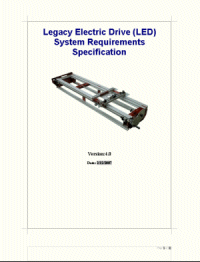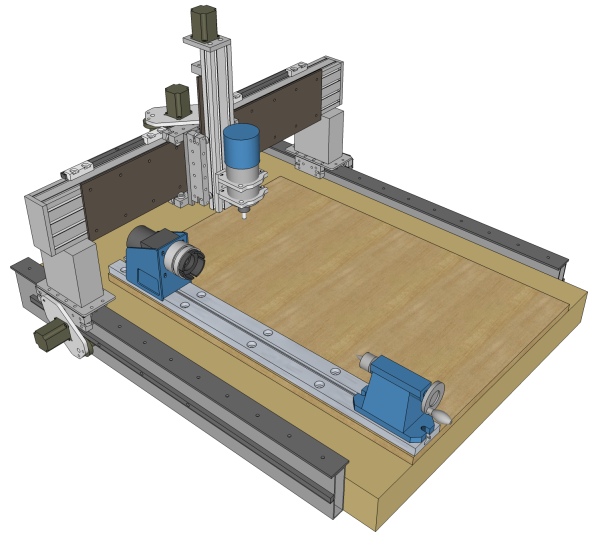|
|
|
| Legacy of a Legacy The makers of the Legacy have made changes to the product lineup since I bought my system but fundamentally the product has remained the same. As of 2010, the company's focus seems to be on 5 axis CNC machines instead of the manually operated machines. There are only 2 manual machines offered, the electric drive as well as some other options are no longer available for these manual machines. After having used my system for a short while I decided that to get the most benefit from the machine it would need to be improved specifically in the area of ease-of-use. Don't get me wrong, the machine isn't "hard" to use, it's more like "inconvenient". Making fluted columns and such is the forte of the machine but this is rather tedious work. In fact, I characterize everything but the most simple X-Y work as Very tedious to Extremely tedious and error prone (as compared to other more common woodworking machines). The up side to the system is that you can accomplish a lot with the machine that would be FAR MORE "inconvenient" to do employing traditional methods. |
| A Paper Legacy At one point I set about looking for a way to relieve this tedium as well as greatly reduce the common errors made by the system and operator. I eventually came up with a paper design for a machine that would be driven by two electric motors that would entirely replace the existing gear train. I named this the Legacy Electric Drive (LED for short). The resulting design was still mostly manually controlled with electronics taking care of X axis and lathe drive movement, synchronization, indexing, and other important tasks. Because I didn't want to be tethered to a PC, my design was to use a stand-alone micro-controller directed by the operator. Even only controlling 2 of the four axis, the design promised to offer a ten-fold increase in the usefulness and capability over any Legacy model. For all intents and purposes it would make the stock Legacy look barbaric by comparison even though it would still be classified as a manually operated machine.. |
 |
| Well, I never got around to creating this control system and my mill fell into some disuse mainly because of the original "inconvenience" problem. Most of the operating time is pretty boring and although the motor drive system I made relieved some of the tedium, it basically only changed the level of it from unacceptable to undesirable; not enough of an improvement to make the system fun to use (for me). | |
| Another Tool Path There is another option however. Enterprising and motivated individuals have trail-blazed paths to do-it-yourself CNC machines. A huge amount of information can be found on the web regarding home-made CNC lathes (round turning types), vertical mills (metal working types), and routers (flat beds). Many of these machines can be built from commonly available materials, welded steel, aluminum plate / extrusions, and even plywood. Plans for machines exist for free or modest fees as well as volumes of information on the electrical and software aspects needed to bring these designs to life. While I won't pretend that building your own CNC router would be easy, there is so much information available there isn't any need to engineer one from scratch. |
 |
| What does a 3 axis CNC router have to do with an ornamental mill you ask? Two things actually, for one, even the simple 3 axis CNC system can EASILY produce all manner of patterns even including rosettes. The second is that after tooling up to the level of a 3 axis CNC, it's fairly easy and VERY economical to add the fourth axis which will allow turnings of all types to be made. A shop-built 3 axis CNC router can be built for as little as $1000 to $4000 depending upon the materials used; a fourth axis could be added for about $400. These figures do not include the price of a PC to run the system nor software to create the designs. | |